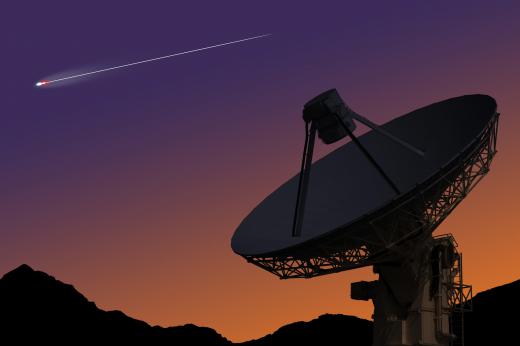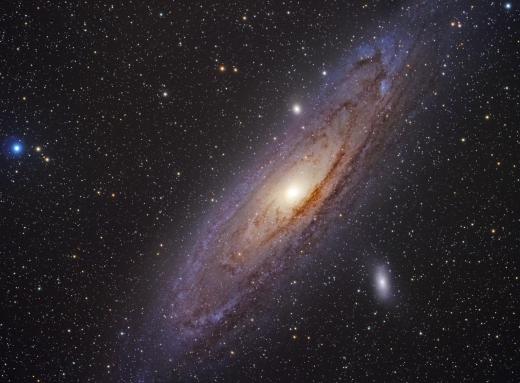What is the Milky Way?
 Mary McMahon
Mary McMahon
The Milky Way is a cluster of stars bound together by gravity in the shape of a spiral. This type of arrangement of stars is known as a galaxy. Many people are familiar with the concept of the Milky Way, since it hosts our own solar system on one of its spiral arms. During especially clear conditions, the Milky Way is visible as a faint band of light in the sky. The stars in this band of light stretch across hundreds of thousands of light years to collectively form our galaxy, which is merely one among billions in the universe.
The name was directly lifted from the Latin via lactea, which means “Milky Way.” It is probably a reference to the appearance of the galaxy in the night sky, since it does look rather like a large puddle of spilled milk. The fact that our galaxy was an interconnected system of stars was posited as early as the 1750s, when observers realized that the white blur in the sky was actually composed of millions of stars.

Astronomers who have studied the origins of our galaxy have determined that it is almost as old as the universe. The galaxy has six spiral arms which emerge from a clear center, marked with a bar of stars. The combination of spirals and a bar has led to the classification of the Milky Way as a barred spiral galaxy. It is estimated that our galaxy holds between 200 and 400 billion stars.

When viewed on its side, the Milky Way has a large central bulge surrounded by a disk of stars and dust. When viewed from above, the arrangement of the spirals around a central bar can clearly be seen. Our solar system is found on the Orion Arm, one of the shorter arms in the Milky Way. The entire galaxy is surrounded by a halo of small star clusters and dust, which would make the galaxy appear murky to outside observers.

The entire galaxy is slowly rotating around the central bar. Given the size of the galaxy, this rotation is so gradual that casual observers do not notice it. It takes the sun between 200 and 230 million years to complete an orbit of the galaxy. The next closest galaxy is the Andromeda Galaxy, another spiral galaxy which is sometimes referred to as our “sister galaxy.” Both galaxies are found in the Virgo Supercluster, a large group of galaxies which includes the “local group,” an assortment of galaxies which includes the Milky Way.
AS FEATURED ON:
AS FEATURED ON:













Discussion Comments
I've seen pictures of the Milky Way, but I would love to see it in the sky with my own eyes. Is there a special time of year when it is more visible? And are there locations in the world where it more visible than in others?
I realize that big cities are probably not a good place for viewing it, because of all of the city lights. But if you are out in the country, does it matter where?
Isn't it funny how we get names for such scientific things! I can't believe the Milky Way may have acquired its name from looking like a puddle of milk in the night sky!
When was this name first given to our galaxy? If the realization that it was in fact a grouping of stars came about in the 1750's, the name may have existed for sometime before then, without people knowing what it was a name for.
Wow! I had no idea that there were billions of galaxies out there! That is amazing, and the thought of it is hard for me to actually wrap my brain around!
How do we know there are so many galaxies in the universe though, especially if they are so far away from our own Milky Way?
Post your comments